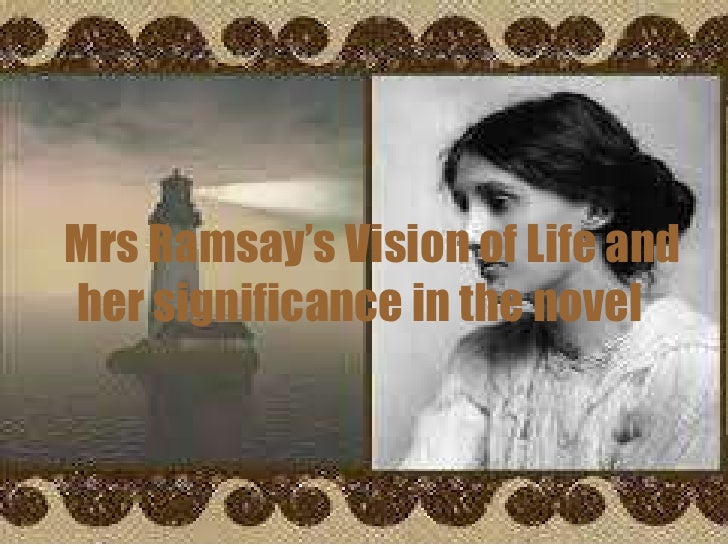

We cannot totally share Lily's flash of ‘vision’ at the end of the novel because it is personal to her, but what we are positioned to do here is to have our own ‘vision’ which enables us to regard the novel in terms of a similar formal context. Ramsays duality when she remarks: how worn she looks as if her own weariness had been partly pitying people, and. 'Lily Briscoe, the painter, is a silhouette of Virginia Woolf, the novelist.

The reader is positioned to conceive of the novel in terms of the painting, and thus to ‘sec’ its clements functioning in the same formal way as those in the painting. Within that verbal form, the painting operates as a point of focus at which apparently divergent forces come together in a unity of balance, and, as this is what is happening in the novel, we see an affinity being suggested between the two creative processes and results. The painting becomes a paradigm of the verbal form that creates it. To the Lighthouse features the artist Lily Briscoes struggles to express her vision, a term which encompasses both her thoughts and feelings about life. As Lily draws the final stroke on her canvas, Virginia Woolf similarly completes the narrative. Ardent and independent, Lily takes time to contemplate differing opinions pressured on her about the idea of womanhood. Within the narrative of Virginia Woolf's To the Lighthouse, and yet at the same time running parallel to it, is the creation of Lily Briscoe's painting. Lily Briscoe In Virginia Woolf's To The Lighthouse 1784 Words8 Pages In the novel To The Lighthouse written by Virginia Woolf, the character development of Lily Briscoe is reflected in the progression of her painting. Embodying the spirit of the female artist, Lily Briscoe in To the Lighthouse examines critical issues pertaining to her role in Virginia Woolfs novel.


 0 kommentar(er)
0 kommentar(er)
